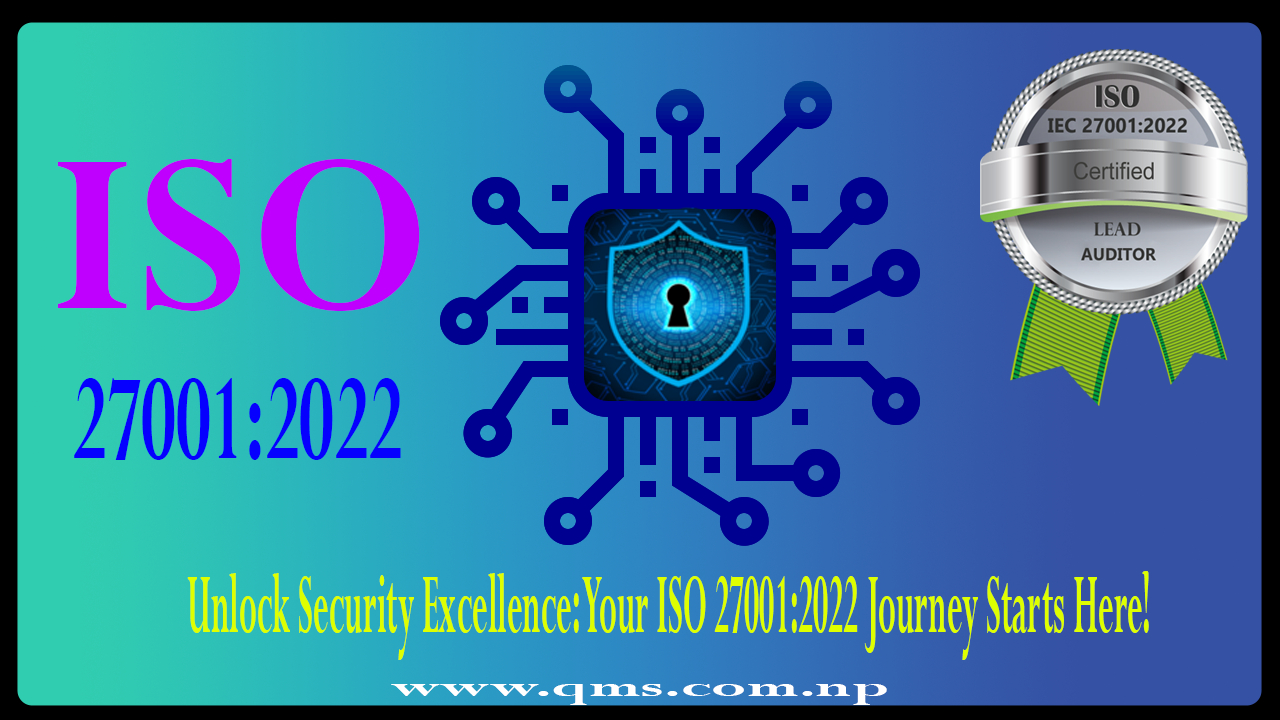Table of Contents
In today’s digitally driven world, the risks of cyberattacks, data breaches, and system disruptions threaten organizations of all sizes. An Information Security Management System (ISMS) provides a structured framework to safeguard your most valuable assets – your data and information systems. Let’s explore what an Information Security Management System is, its benefits, and how to get started.

Understanding an Information Security Management System
An Information Security Management System is a systematic approach encompassing people, processes, and technology to manage and protect an organization’s sensitive information. It goes beyond mere technical solutions, establishing a holistic framework for:
- Identifying risks: Thoroughly assessing potential threats to your information assets.
- Implementing controls: Selecting and deploying safeguards to mitigate the identified risks.
- Monitoring and measuring: Continuously evaluating the Information Security Management System’s effectiveness and making adjustments.
- Continual improvement: Establishing a culture of ongoing refinement to adapt to evolving threats.
Advantages of Information Security Management System
Implementing an ISMS offers a multitude of benefits for organizations of all sizes and across various industries. Here are some of the most compelling reasons to embrace an ISMS:
- Enhanced Security: An ISMS empowers you to systematically identify, assess, and address information security risks, proactively safeguarding your valuable data.
- Regulatory Compliance: The ISMS framework aligns with various data privacy regulations and industry-specific standards, such as GDPR, HIPAA, PCI DSS, and NIST CSF.
- Reduced Costs: By preventing security incidents and data breaches, an ISMS can translate to significant cost savings. The proactive approach to risk management helps avoid potential financial penalties, reputational damage, and operational disruptions.
- Improved Customer Trust: A robust ISMS demonstrates your commitment to information security, fostering trust and confidence with customers and partners who entrust you with their sensitive data.
- Competitive Advantage: In today’s data-driven landscape, a strong information security posture can be a significant differentiator. By prioritizing information security, you can set your organization apart from competitors who may have weaker security practices.
Key Components of an Effective ISMS
A successful ISMS is built on a foundation of core elements working in concert. Here’s a closer look at some of the critical building blocks:
- Management Commitment: Active leadership support and involvement from senior management are crucial for the ISMS’s success. This commitment translates into resource allocation, budget approval, and clear communication of the organization’s security posture.
- ISMS Policy: This high-level document outlines the organization’s information security philosophy, setting objectives and aligning them with overall business goals. The policy communicates management’s commitment to information security and serves as a guiding principle for employees.
- Risk Assessment: A comprehensive risk assessment process is the cornerstone of any ISMS. It systematically identifies, analyzes, and evaluates potential threats and vulnerabilities to your information assets. By understanding the likelihood and impact of these risks, you can prioritize your security efforts and allocate resources effectively.
- Risk Treatment: Once risks are identified, you need to establish appropriate controls (technical, procedural, or organizational) to mitigate them. Risk treatment options include avoiding the risk, reducing its likelihood, minimizing its impact, transferring the risk, or accepting it.
- Security Awareness and Training: Educating employees at all levels about information security is vital. Regular training programs should raise awareness about cybersecurity threats, best practices for secure behavior, and the importance of the ISMS.
- Incident Management: A well-defined incident management plan ensures a swift and effective response to security incidents. This plan outlines procedures for identifying, containing, eradicating, and recovering from security breaches or other disruptions.
- Monitoring and Measurement: Continuously monitoring the ISMS’s performance is essential. Establishing metrics and processes to track the effectiveness of your security controls allows you to identify areas for improvement and adapt your ISMS as needed.
- Internal Audits: Regular internal audits evaluate the ISMS’s effectiveness in meeting its objectives and adherence to established policies and procedures. Internal audits help identify gaps and weaknesses in your security posture and ensure your ISMS remains aligned with evolving threats.
- Management Review: Top management’s periodic review of the ISMS is critical. This review ensures the ISMS remains relevant and effective in the face of changing business needs and the evolving security landscape. Management review allows
The ISO 27001 Standard
ISO 27001 is the internationally recognized standard for information security management System. It provides a comprehensive set of requirements for establishing, implementing, maintaining, and improving an ISMS. While not mandatory, ISO 27001 certification demonstrates to stakeholders that your organization adheres to best practices for information security.
Getting Started with Your ISMS
- Define the scope: Clearly determine which assets, processes, and systems fall within the ISMS.
- Conduct a risk assessment: Identify and analyze potential threats and vulnerabilities.
- Develop an ISMS policy: Create a guiding document outlining information security objectives.
- Implement controls: Select and deploy appropriate security measures.
- Train your workforce: Ensure employees understand their role in information security.
- Monitor and review: Regularly evaluate the ISMS and make necessary improvements.
Frequently Asked Questions:
What is an information security management system (ISMS)?
An information security management system (ISMS) is a framework of policies, procedures, and controls that helps organizations manage the security of their information assets. It ensures the confidentiality, integrity, and availability of information by identifying and mitigating risks.
How to become an information systems security manager?
There is no one-size-fits-all path to becoming an information systems security manager, but some common steps include:* Earning a bachelor's degree in cybersecurity or a related field. * Obtaining relevant certifications, such as Certified Information Systems Security Professional (CISSP) or Certified Information Systems Auditor (CISA). * Gaining experience in information technology (IT) security roles, such as security analyst or security engineer.
What is a security information and event management (SIEM) system?
A security information and event management (SIEM) system is a tool that collects and analyzes security data from various sources within an organization. It helps security teams identify and respond to security incidents more quickly and effectively.
How to implement an information security management system (ISMS)?
Implementing an ISMS involves several steps, including:* Defining the scope of the ISMS * Conducting a risk assessment * Developing an ISMS policy * Implementing security controls * Raising security awareness among employees * Monitoring and reviewing the ISMS
Why is maintenance needed for information security management systems (ISMS)?
Information security threats are constantly evolving, so it’s essential to maintain your ISMS to ensure it remains effective. This involves regularly reviewing and updating your ISMS policies, procedures, and controls.
A(n) information security manager manages security for the organization’s information systems.
An information security manager is responsible for developing and implementing an organization’s ISMS. They oversee all aspects of information security, including risk assessment, security policy development, and security awareness training.
Do you comply with an information management security system?
This question can’t be definitively answered without knowing more about your organization’s specific ISMS and security requirements. An ISMS helps organizations comply with various information security regulations and standards.
